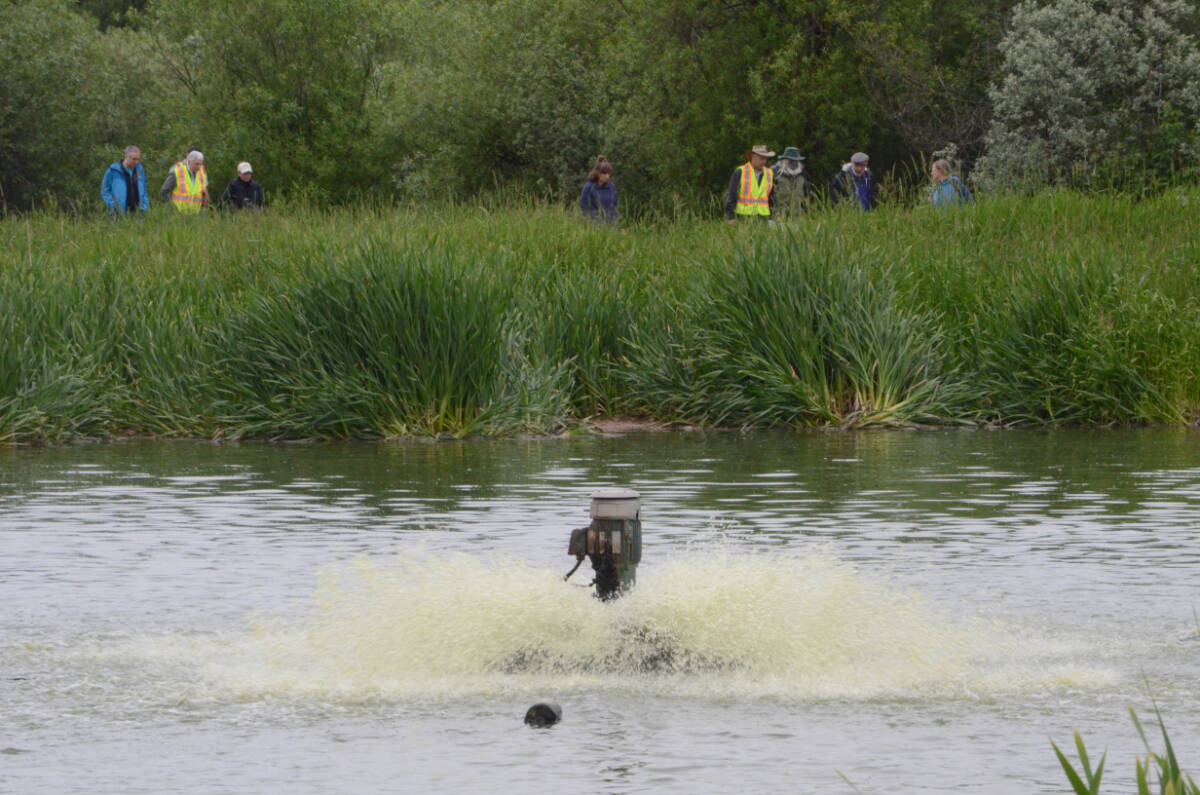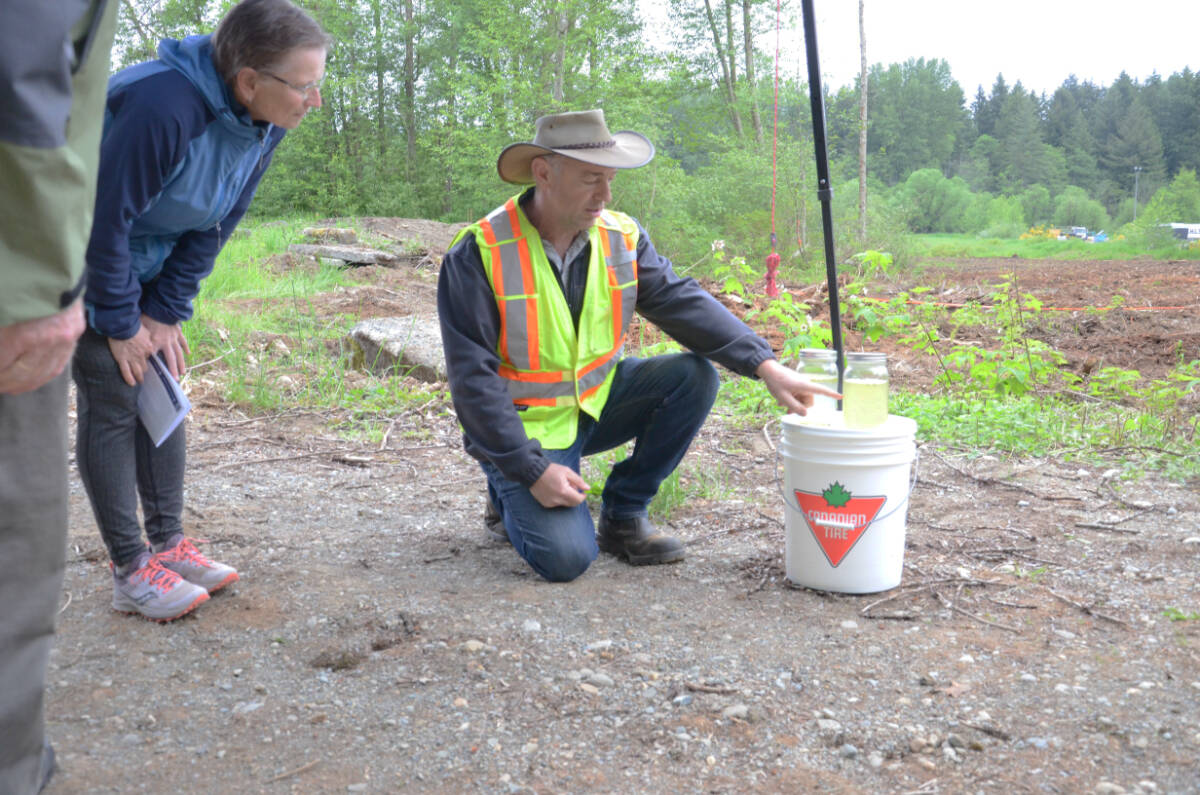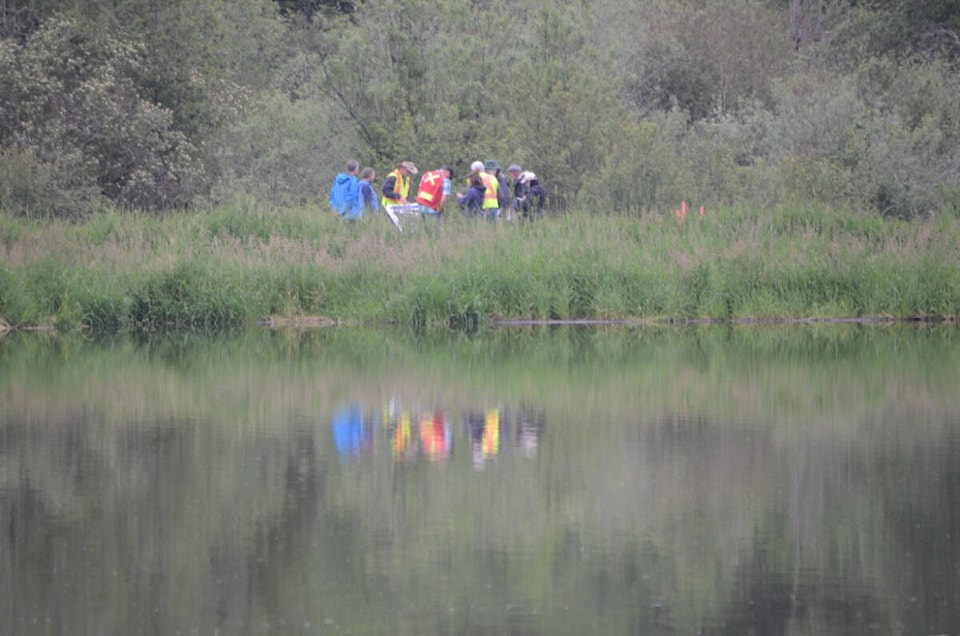Success for Cumberland’s new wastewater treatment plant could rest on technology used in the mining industry that involves floating.
The process is a variant of a technology that can even move materials like gold or lead by floating them on a froth to the surface where materials can then be concentrated.
“This technology is similar to that, using bubbles to float stuff,” said Paul Nash, the project co-ordinator for Cumberland’s new plant.
Known as surfactant assisted floatation (SAF), the process is also used in the food industry but has been applied increasingly in the U.S. in the treatment of wastewater to remove algae and bacteria by floating them to the surface.
RELATED STORY: Cumberland changes funding plans for wastewater plant
Nash showed a video and talked about the SAF technology at council on June 13, explaining the benefits and rationale. He and others on the team also led the public on tours of the site a couple of days later. Construction could start in September, following a ground-breaking ceremony ideally to take place in August.
During a Q&A session following a tour, he provided more details and showed the difference between the current water and some treated with a coagulant used in the process. The latter was much clearer, though Nash added, this was not even the end product.
He also noted changes made to boost the climate resiliency of the project, particularly in response to extreme heat and precipitation from 2021.
At council, he also answered questions about the project’s status. Coun. Jesse Ketler asked about the change from a peroxide-based disinfectant to one using chlorine. Nash responded that he had had the same concerns but discovered the chlorine dioxide becomes neutralized by water aeration and poses no danger to fish. He explained it has applications such as disinfecting tanks in aquaculture.
“There’s chlorine in there, but it acts differently to the chlorine in bleach,” he said. “It’s not chlorine as we normally think of it.”
A major change for the project is that the team is not doing another official budget estimate because of difficulties in getting firm numbers during the bidding process versus actual costs in the current procurement climate. Many institutions such as local governments and school districts have faced increasing costs the last couple of years due to factors such as labour or supply chain challenges. At present, the project is estimated to be $600,000 over budget.
“The estimate becomes obsolete. Putting it another way — these days the estimate that counts is what somebody’s prepared to supply it for or build for,” Nash said. “That is a change in philosophy. We’d rather wait till we get the real numbers. That wasn’t my thinking six, or even three months ago.”
The approach now is to get as much of the cost information from a forecast to an actual commitment as quickly as possible. They have, however, changed the procurement model, moving inessential items to a second procurement process in order to save money. At present, the unfortunate part, Nash said, is that there is no further scope for cost reductions other than if they ‘get lucky’ with suppliers.
mike.chouinard@comoxvalleyrecord.com
Like us on Facebook and follow us on Twitter.


